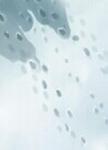版权所有:内蒙古大学图书馆 技术提供:维普资讯• 智图
内蒙古自治区呼和浩特市赛罕区大学西街235号 邮编: 010021

作者机构:Univ Sci & Technol China CAS Key Lab Technol Geospatial Informat Proc & App Hefei 230027 Peoples R China
出 版 物:《IEEE TRANSACTIONS ON MULTIMEDIA》 (IEEE Trans Multimedia)
年 卷 期:2025年第27卷
页 面:2043-2058页
核心收录:
学科分类:0810[工学-信息与通信工程] 0808[工学-电气工程] 08[工学] 0835[工学-软件工程] 0812[工学-计算机科学与技术(可授工学、理学学位)]
基 金:NSFC [623B2098 62371434 62021001]
主 题:Distortion Feature extraction Image quality Training Reliability Degradation Visualization Transforms Transform coding Training data Perception-oriented unsupervised domain adaptation no-reference image quality assessment style alignment style mixup
摘 要:Deep neural networks (DNNs) have shown great potential in no-reference image quality assessment (NR-IQA). However, the annotation of NR-IQA is labor-intensive and time-consuming, which severely limits its application, especially for authentic images. To relieve the dependence on quality annotation, some works have applied unsupervised domain adaptation (UDA) to NR-IQA. However, the above methods ignore the fact that the alignment space used in classification is sub-optimal, since the space is not elaborately designed for perception. To solve this challenge, we propose an effective perception-oriented unsupervised domain adaptation method StyleAM (Style Alignment and Mixup) for NR-IQA, which transfers sufficient knowledge from label-rich source domain data to label-free target domain images. Specifically, we find a more compact and reliable space i.e., feature style space for perception-oriented UDA based on an interesting observation, that the feature style (i.e., the mean and variance) of the deep layer in DNNs is exactly associated with the quality score in NR-IQA. Therefore, we propose to align the source and target domains in a more perceptual-oriented space i.e., the feature style space, to reduce the intervention from other quality-irrelevant feature factors. Furthermore, to increase the consistency (i.e., ordinal/continuous characteristics) between quality score and its feature style, we also propose a novel feature augmentation strategy Style Mixup, which mixes the feature styles (i.e., the mean and variance) before the last layer of DNNs together with mixing their labels. Extensive experimental results on many cross-domain settings (e.g., synthetic to authentic, and multiple distortions to one distortion) have demonstrated the effectiveness of our proposed StyleAM on NR-IQA.